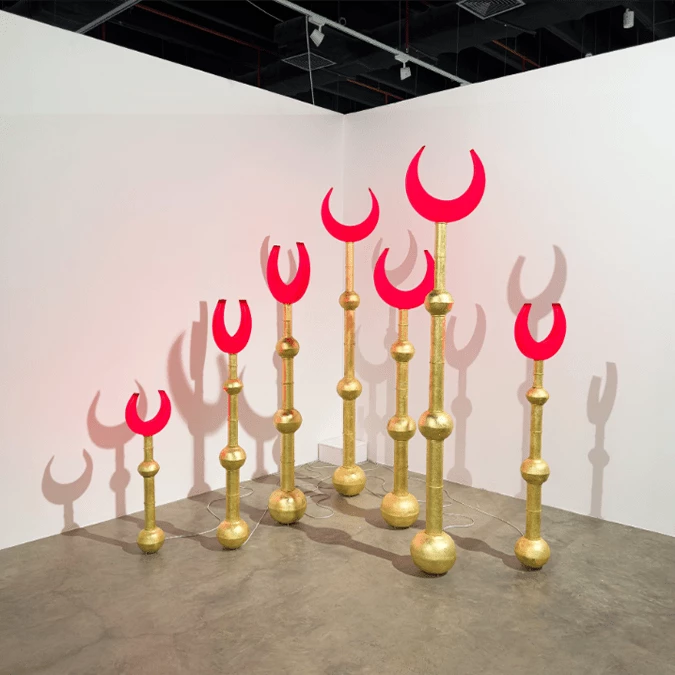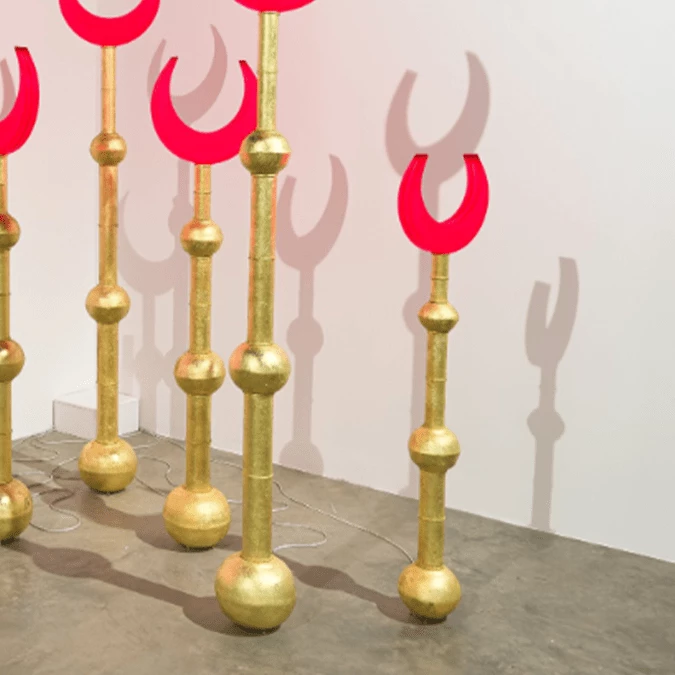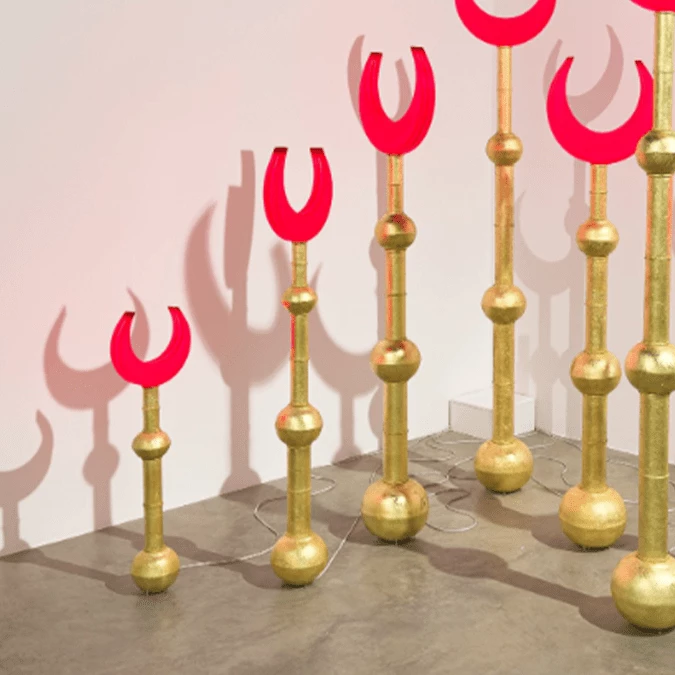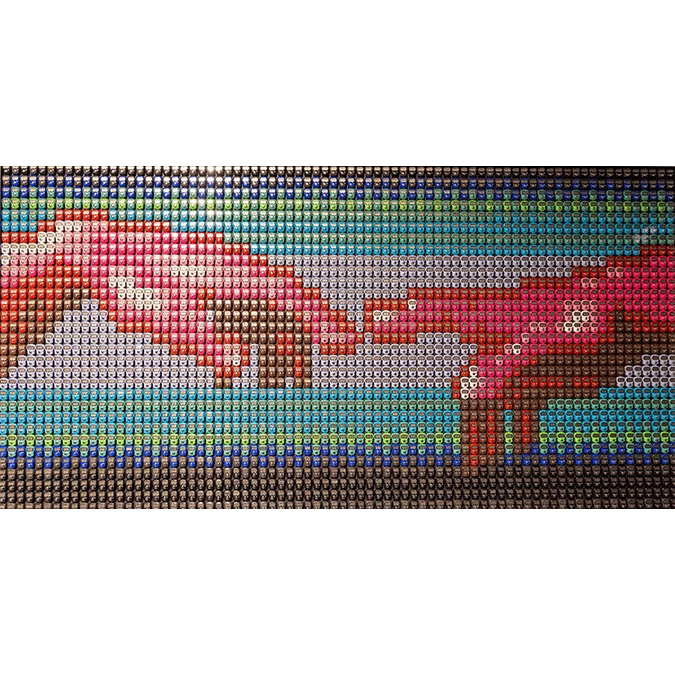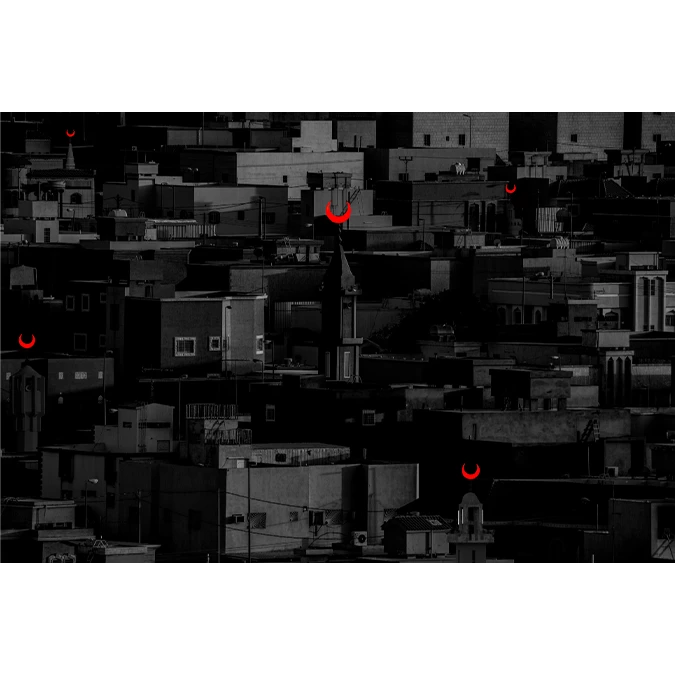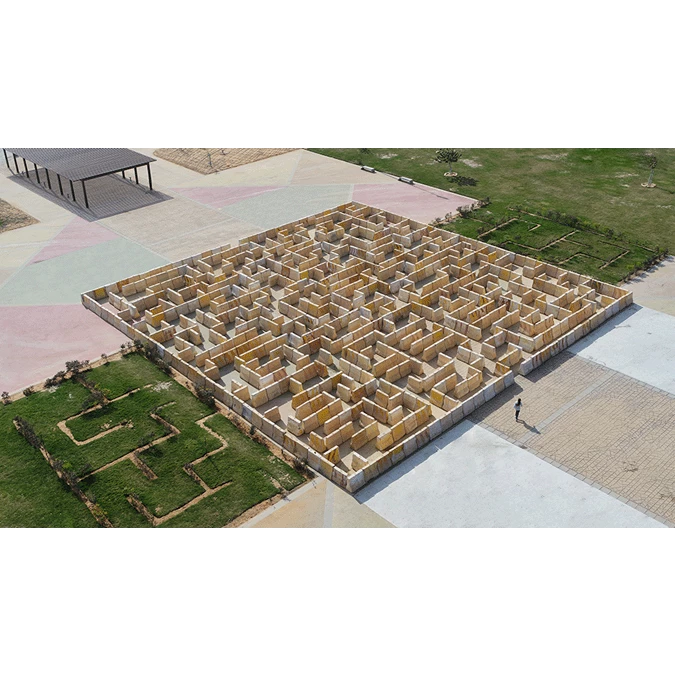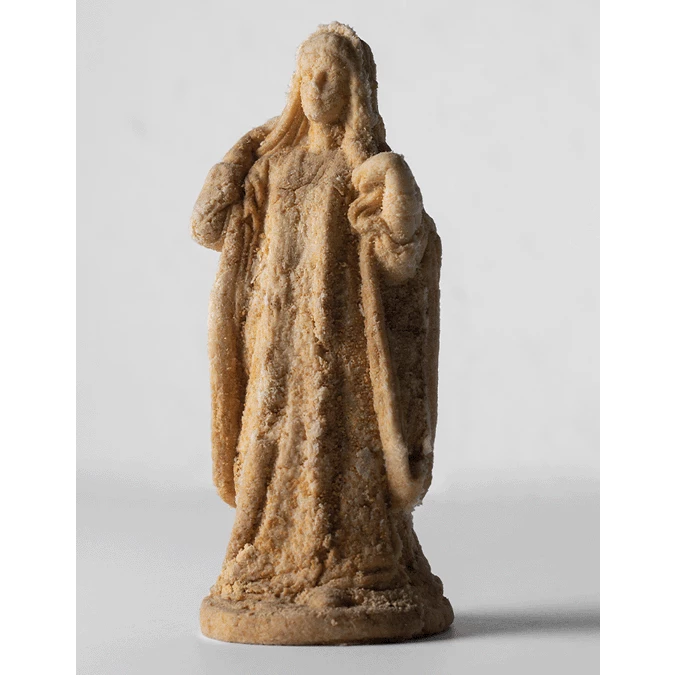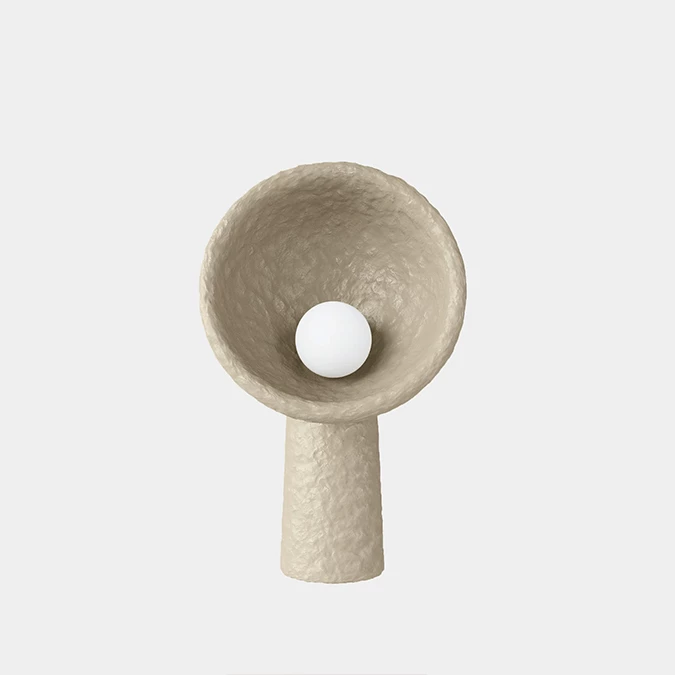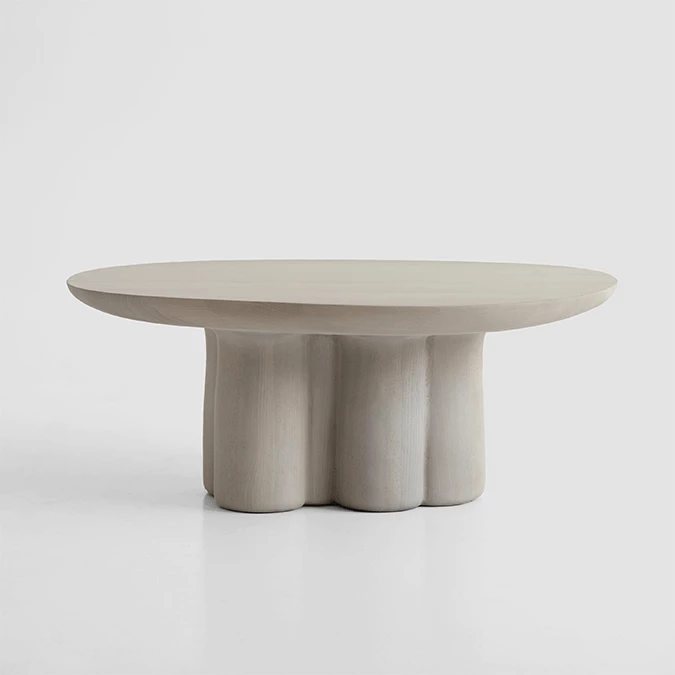Red Crescent, 2023
In the midst of the Covid-19 pandemic, when mosques were forced to close to curb the spread of the disease, the state responded by establishing new health centers to combat the crisis. This transformation reflects the understanding that acts of charity and worship extend beyond the traditional places of prayer. Just as building mosques is considered an act of devotion, so too is the establishment of health centers, for they promote good health, allowing individuals to practice their faith in a state of well-being. As it is said, the entire earth is a mosque for God, and prayer can be offered in any place. The artwork, “ Red Crescent " : takes inspiration from this transformative period in Riyadh's history. It is an installation consisting of seven copper minarets, each representing a mosque. However, the traditional crescents that adorn the minarets have been replaced with a radiant red hospital crescent, symbolizing the shift from worship to care for human well-being. The choice of copper signifies the enduring nature of both faith and health.
| Category: | Sculpture |
|---|---|
| Length: | 220 Cm |
| Height: | 220 Cm |
| Width: | 20 Cm |
| Material: | Acrylic on wood |
| Framed: | No |
| Edition: | 1-5 |
| Country: | Saudi Arabia |
| Shipping from: | Saudi Arabia |
Hmoud Alattawi
Born in 1986 in Sajir, Saudi Arabia, Hmoud Al Attawi is active as an art educator which informs and directs his artistic practice continually. Al Attawi is fascinated by the translation of narrative between traditional and new media, where he traces memory, be it collective, communal or individual. He continues his anthropological search into history, that of his city, country, and the integration of new realities. He lives and works in Riyadh, Saudi Arabia.
